Abs: The Jewels of the Crown
by Aaron Whitten, C.P.T., C.E.S.
Abdominals are the visual centerpiece of the body. They immediately give away an individual’s level of conditioning. They demand respect unlike any other body part because they reveal one’s discipline outside the gym. They are the visual indicator of how successfully a competitor dieted and prepared for a show, and can absolutely make or break someone’s chances of winning.
So with all the importance of the abdominals, why are they treated in such a bizarre fashion? Short range, low intensity, high-repetition, weightless movements are the norm for abs. That type of training would never become a norm for any other body part. Odd theories circulate, such as avoiding certain moves because they supposedly distend the midsection, or not training abs at all during the majority of the year because it’s not needed! Now there’s a new fad making its rounds: “functional training” or “sports specific training,” which demands training abs by doing much of the work on unbalanced objects and with bizarre floor exercises. Let’s sift through the nonsense.
I used to think abdominal work was unnecessary during most of the year. “Let the diet take care of it,” was my motto. Honest retrospection reveals that attitude was due to laziness. That practice would have continued had I not run into a wall. My abs were not improving. Diet was taking the fat off and my abs looked good, but no different than when I was many years younger. In contrast, my other body parts were showing noticeable improvements. Something didn’t seem right. I looked at photos of great midsections and compared them to my own. The difference was actual thickness of the abdominal muscles. In short, the midsections I admired had more mass.
So how would I gain more thickness in my abs? I began by actually training abs for starters. Instead of training them sporadically, I followed typical ab routines twice weekly during the off-season, and three times weekly pre-contest. These routines consisted of lots of crunches (normally 20-50 reps per set) and about a dozen sets. I also did giant sets pre-contest: five or more moves back to back without rest. After a year, I revealed my newly constructed abdominals! They looked… okay, I guess. Not outstanding. There was a little more development, but nothing like I had hoped for. So much for the power of visualization. I had a clear picture in mind of what they would look like, but that was NOT how they turned out. What happened?
I had radically increased my workload, yet improvement was only slight. Was I to continue with the horrid ab work for another couple of years, hoping it would eventually pan out, or say screw it and return to my original ways? The latter had started to look like better sense, but I wasn’t quite ready to give up. There was another option, and it was the most dreaded of all: I was going to have to think for myself. That’s right, no reliance on common dogma or gym lore. I would have to actually figure something out on my own.
It boiled down to the fact that I lacked mass. Not a hard thing to believe, because as an ectomorph, I lacked mass throughout my body. Why would my abs be any different? And why would I think that high rep, weightless exercises would suddenly cause them to fill out? The aerobic class type of training wasn’t doing the trick. I needed to apply the same logic to my abs that I did for other body parts. This meant finding the moves that best stressed the area over the longest range of motion, and that allowed the heaviest resistance. I came up with hanging leg raises and crunches.
I took the hanging leg raises through the full range of motion: all the way up until my toes touched the ceiling, and all the way down until they were slightly behind my body. Those were hard to do even weightless. However, I stuck with it until I could eventually perform them with added weight by holding a dumbbell between my feet.
For the crunches, I tried many varieties before finding a winner. I layed on a flat bench with my head slightly off the end, held a dumbbell in a pullover fashion grip against the back of my skull, and crunched upward in explosive fashion. I trained my abs like I would train any other body part when trying to add size: once every five days with reps in the 5-8 range. It only took a couple workouts to realize it was working.
I had my winning formula, but the battle wasn’t completely over. I had to deal with the nemesis of all intelligent trainees, the dreaded New Wave Trainer. You know the type: the guy who loves to tell others how to train in the latest fashions. He’s the one who doesn’t seem to train much himself, but loves to profess his wisdom. I was bombarded with advice, all of which told me that I was causing irreversible damage to my body. I heard my stomach would protrude worse than a pregnant woman’s, that my lower back would explode any day, and that my waist would get thick and hang off my hips. What helped me to dismiss such advice was to look at the source. Most of the people advising me did not possess abs, or any other muscle in their body for that matter. All the same, I kept close watch to see if any of the forewarned changes occurred. What I found was interesting. Negative changes did not manifest. In fact, quite the opposite occurred. My abs were crisp and delineated, and could be sucked into a vacuum more easily. My intercostals and obliques were pronounced and tapered better. Plus my back never felt better! I had an entire season injury free while the know-it-alls stuck with their balancing on slant boards and half balls.
Common sense also dictates a sensible approach to off-season dieting. Getting too fat means not seeing abs, which can be embarrassing enough by itself. But higher levels of fat also increase the risk of loose skin and wrinkles despite one’s best attempts at cutting up. Bulking may be useful as a teenager, but after the first few years of training, it loses its value. Maintaining a manageable body fat level during the off-season, such as 10-12% for men, makes contest prep much easier than having to diet off a lot of excess fat. Slamming down thousands of additional calories in the off-season doesn’t make very much sense anyway, as activity levels are generally lower than during the insanity of ripping up. Besides, building additional mass only requires a few hundred calories over maintenance levels. Bulking up in the off-season was another fallacy dispelled, the results of which benefited my abdominals.
So the moral of the story is that abs are not unlike the rest of the body. Forget all the junk about postural muscles and so-called stabilizers. Train abs hard, heavy and briefly for most of the year. Keep track of your workouts to insure improvement and set goals to instill enthusiasm. Hopefully you’ll view abdominal training in a new light now. Then the next time you step on stage, the judges should see your new and improved, ripped, corrugated washboard abs under the lights!
by Aaron Whitten, C.P.T., C.E.S.
Abdominals are the visual centerpiece of the body. They immediately give away an individual’s level of conditioning. They demand respect unlike any other body part because they reveal one’s discipline outside the gym. They are the visual indicator of how successfully a competitor dieted and prepared for a show, and can absolutely make or break someone’s chances of winning.
So with all the importance of the abdominals, why are they treated in such a bizarre fashion? Short range, low intensity, high-repetition, weightless movements are the norm for abs. That type of training would never become a norm for any other body part. Odd theories circulate, such as avoiding certain moves because they supposedly distend the midsection, or not training abs at all during the majority of the year because it’s not needed! Now there’s a new fad making its rounds: “functional training” or “sports specific training,” which demands training abs by doing much of the work on unbalanced objects and with bizarre floor exercises. Let’s sift through the nonsense.
I used to think abdominal work was unnecessary during most of the year. “Let the diet take care of it,” was my motto. Honest retrospection reveals that attitude was due to laziness. That practice would have continued had I not run into a wall. My abs were not improving. Diet was taking the fat off and my abs looked good, but no different than when I was many years younger. In contrast, my other body parts were showing noticeable improvements. Something didn’t seem right. I looked at photos of great midsections and compared them to my own. The difference was actual thickness of the abdominal muscles. In short, the midsections I admired had more mass.
So how would I gain more thickness in my abs? I began by actually training abs for starters. Instead of training them sporadically, I followed typical ab routines twice weekly during the off-season, and three times weekly pre-contest. These routines consisted of lots of crunches (normally 20-50 reps per set) and about a dozen sets. I also did giant sets pre-contest: five or more moves back to back without rest. After a year, I revealed my newly constructed abdominals! They looked… okay, I guess. Not outstanding. There was a little more development, but nothing like I had hoped for. So much for the power of visualization. I had a clear picture in mind of what they would look like, but that was NOT how they turned out. What happened?
I had radically increased my workload, yet improvement was only slight. Was I to continue with the horrid ab work for another couple of years, hoping it would eventually pan out, or say screw it and return to my original ways? The latter had started to look like better sense, but I wasn’t quite ready to give up. There was another option, and it was the most dreaded of all: I was going to have to think for myself. That’s right, no reliance on common dogma or gym lore. I would have to actually figure something out on my own.
It boiled down to the fact that I lacked mass. Not a hard thing to believe, because as an ectomorph, I lacked mass throughout my body. Why would my abs be any different? And why would I think that high rep, weightless exercises would suddenly cause them to fill out? The aerobic class type of training wasn’t doing the trick. I needed to apply the same logic to my abs that I did for other body parts. This meant finding the moves that best stressed the area over the longest range of motion, and that allowed the heaviest resistance. I came up with hanging leg raises and crunches.
I took the hanging leg raises through the full range of motion: all the way up until my toes touched the ceiling, and all the way down until they were slightly behind my body. Those were hard to do even weightless. However, I stuck with it until I could eventually perform them with added weight by holding a dumbbell between my feet.
For the crunches, I tried many varieties before finding a winner. I layed on a flat bench with my head slightly off the end, held a dumbbell in a pullover fashion grip against the back of my skull, and crunched upward in explosive fashion. I trained my abs like I would train any other body part when trying to add size: once every five days with reps in the 5-8 range. It only took a couple workouts to realize it was working.
I had my winning formula, but the battle wasn’t completely over. I had to deal with the nemesis of all intelligent trainees, the dreaded New Wave Trainer. You know the type: the guy who loves to tell others how to train in the latest fashions. He’s the one who doesn’t seem to train much himself, but loves to profess his wisdom. I was bombarded with advice, all of which told me that I was causing irreversible damage to my body. I heard my stomach would protrude worse than a pregnant woman’s, that my lower back would explode any day, and that my waist would get thick and hang off my hips. What helped me to dismiss such advice was to look at the source. Most of the people advising me did not possess abs, or any other muscle in their body for that matter. All the same, I kept close watch to see if any of the forewarned changes occurred. What I found was interesting. Negative changes did not manifest. In fact, quite the opposite occurred. My abs were crisp and delineated, and could be sucked into a vacuum more easily. My intercostals and obliques were pronounced and tapered better. Plus my back never felt better! I had an entire season injury free while the know-it-alls stuck with their balancing on slant boards and half balls.
Common sense also dictates a sensible approach to off-season dieting. Getting too fat means not seeing abs, which can be embarrassing enough by itself. But higher levels of fat also increase the risk of loose skin and wrinkles despite one’s best attempts at cutting up. Bulking may be useful as a teenager, but after the first few years of training, it loses its value. Maintaining a manageable body fat level during the off-season, such as 10-12% for men, makes contest prep much easier than having to diet off a lot of excess fat. Slamming down thousands of additional calories in the off-season doesn’t make very much sense anyway, as activity levels are generally lower than during the insanity of ripping up. Besides, building additional mass only requires a few hundred calories over maintenance levels. Bulking up in the off-season was another fallacy dispelled, the results of which benefited my abdominals.
So the moral of the story is that abs are not unlike the rest of the body. Forget all the junk about postural muscles and so-called stabilizers. Train abs hard, heavy and briefly for most of the year. Keep track of your workouts to insure improvement and set goals to instill enthusiasm. Hopefully you’ll view abdominal training in a new light now. Then the next time you step on stage, the judges should see your new and improved, ripped, corrugated washboard abs under the lights!


 Please Scroll Down to See Forums Below
Please Scroll Down to See Forums Below 










